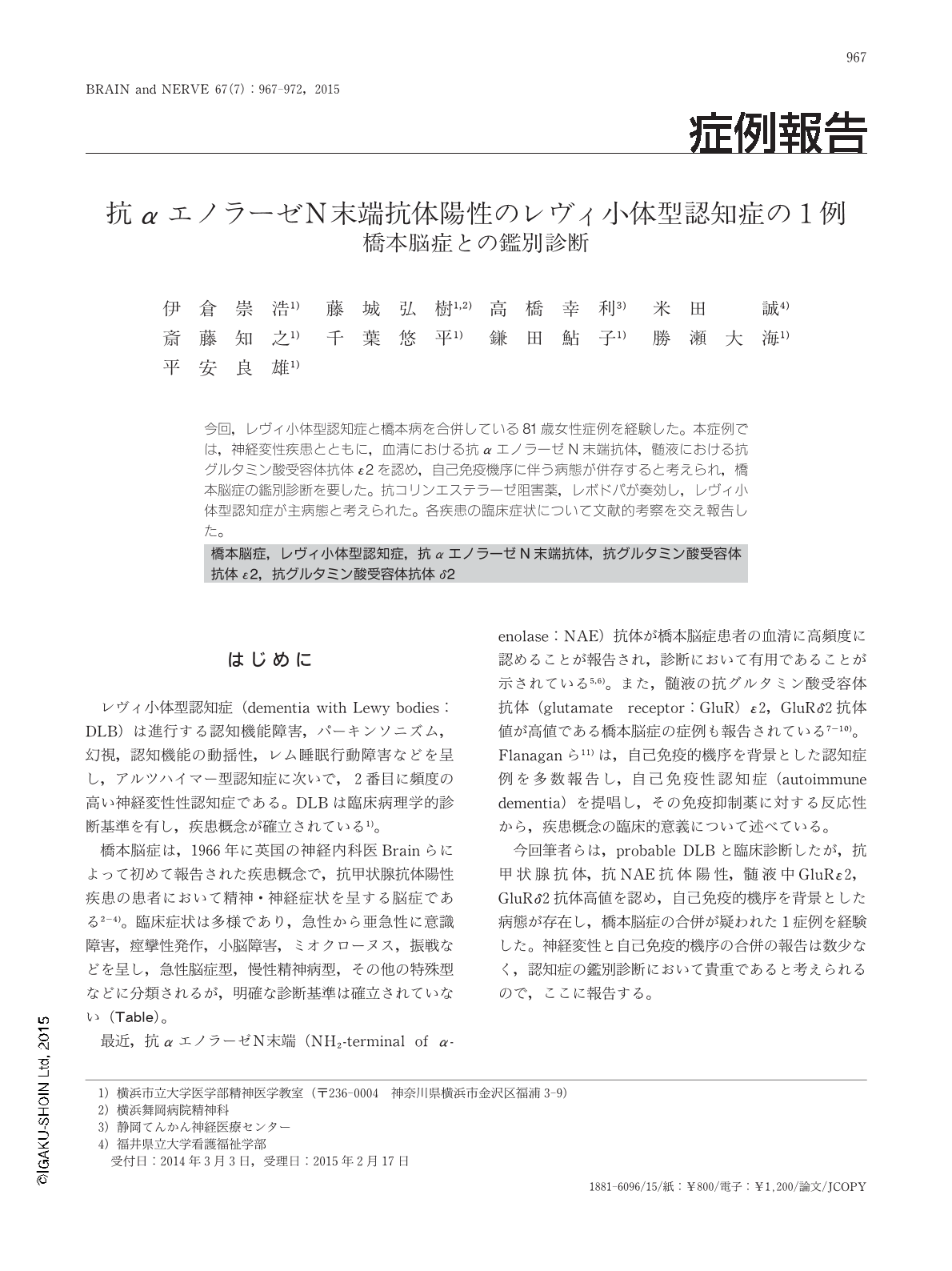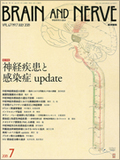Japanese
English
- 有料閲覧
- Abstract 文献概要
- 1ページ目 Look Inside
- 参考文献 Reference
今回,レヴィ小体型認知症と橋本病を合併している81歳女性症例を経験した。本症例では,神経変性疾患とともに,血清における抗αエノラーゼN末端抗体,髄液における抗グルタミン酸受容体抗体ε2を認め,自己免疫機序に伴う病態が併存すると考えられ,橋本脳症の鑑別診断を要した。抗コリンエステラーゼ阻害薬,レボドパが奏効し,レヴィ小体型認知症が主病態と考えられた。各疾患の臨床症状について文献的考察を交え報告した。
Abstract
Dementia with Lewy bodies (DLB) is clinically characterized by progressive dementia that is frequently accompanied by neurological and psychiatric manifestations. Hashimoto's encephalopathy (HE) is a rare autoimmune disease with neurological and psychiatric manifestations that is not well understood. However, this disease has attracted growing attention as a treatable dementia. Although autoimmune mechanisms are thought to play a pathogenic role in HE, the etiology of the disease remains unclear. Recently, it was reported that the serum in patients with HE is frequentry positive for autoantibodies against the anti-NH2-terminal of α-enolase (anti-NAE), indicating a useful serological diagnostic marker for HE.
We report the case of an 81-year-old Japanese woman with probable DLB and hypothyroidism. In her serum, elevated anti-thyroid antibodies and positive autoantibodies against anti-NAE were observed. Elevated levels of anti-glutamate receptor ε2 subunit (GluRε2) antibodies were also detected in her cerebrospinal fluid. Because her clinical condition became stable after treatment with cholinesterase inhibitor, levodopa, and levothyroxine, immunotherapy was not performed. Although the relationship between autoimmunity and cognitive decline in this patient was unclear, the present observations suggest the coexistence of neurodegeneration and autoimmunity as the underlying pathogenic mechanism.
(Received March 3, 2014; Accepted February 17, 2015; Published July 1, 2015)

Copyright © 2015, Igaku-Shoin Ltd. All rights reserved.


